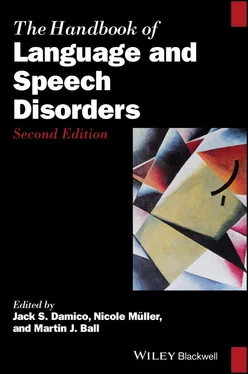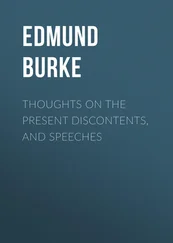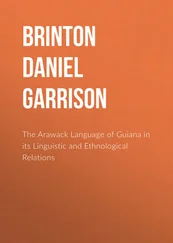95 World Health Organization. (2019b). International classification of functioning, disability and health (ICF). Geneva, Switzerland: Author. Retrieved from https://www.who.int/classifications/icf/en
3 Hearing Loss and Cochlear Implants
DAVID JACKSON MORRIS 1AND DAAN VAN DE VELDE 2
1University of Copenhagen, Denmark
2Leiden University, The Netherlands
Hearing loss is a symptom associated with multiple disease processes, a receptive communication condition that corrodes social interaction and, as an acquired condition, it is a curse with many concomitant effects. Approximately one in a thousand infants is born with hearing loss and after the age of 60, many of us will experience some form of hearing loss regardless of what we have been exposed to in the form of noise, substances or diseases. This foundational chapter will review recent advances in the causes of, and problems associated with, hearing loss, while also presenting advances in the treatment of these, particularly those ushered in by the mainstream adoption of the cochlear implant (CI). This device is surgically implanted into the inner ear of a patient and transmits acoustic energy into electrical pulses that are picked up by the auditory nerve and relayed to the brain. We will also consider the auditory limitations imposed on listeners that use CIs in their daily communication. For the purpose of this chapter we will focus on hearing loss associated with the inner ear and the peripheral auditory neuraxis, that is, sensorineural hearing loss.
In discussing cochlear implantation, we have recourse to a number of established models which provide detail for: (a) the patient journey from the onset of hearing loss to a postoperative period where speech perceptual results have stabilized; (b) speech production, and the pre‐articulatory comparison of acoustic projections of a target with its realization, with regards to the period of auditory deprivation prior to CI use. Furthermore, we review literature that examines speech perception by CI recipients according to a teleological framework that addresses the gamut of speech perceptual competencies that are drawn on during receptive communication, from identifying segmental attributes to deducing the inferred communicative intent of a speaker.
3.2 Hearing Loss
3.2.1 ISO 7029 and Observations from Hearing Loss in Normal Aging Populations
Even among populations with no symptoms of ear disease and no history of noise exposure, hearing loss occurs and can be seen in median pure tone audiometric threshold data. This hearing loss, which generally increases with age, is described in the international standard ISO 7029:2017(E) and can be used to isolate the effects stemming from causes of hearing loss that are not attributable to aging. Figure 3.1shows the expected distribution of monaural thresholds based on an average of both male and female extrapolations. According to ISO 7029, there is a gender effect whereby audiometric thresholds for males worsen earlier and are more severe than the values for females, but see also Dawes et al. (2014) who found no significant gender effect on speech in noise results in middle‐aged adults, and also Göthberg et al. (2019) who reported similar high‐frequency results but better low‐frequency hearing acuity in elderly males than females. As these large‐sample studies of hearing loss do not consistently support a gender effect, we have plotted mean data from males and females together in Figure 3.1.

Figure 3.1 Age‐related hearing loss not caused by disease, noise or substance exposure, as described in ISO 7029 (2012) for 40, 60 and 80 years of age. Data are the means from the male and female values: thick line is the median; boxes are the 25th and the 75th percentiles; and, whiskers are the 10th and the 90th percentiles.
A number of trends are obvious. Hearing loss occurring with age is concentrated at the high frequencies and therefore most likely to be sensorineural. From the percentile distribution of data at 80 years we can also see that, if we live that long, most of us will experience some form of non‐acquired hearing loss, that is, hearing loss not attributable to an exogenous cause. It is evident that while median audiometric thresholds at 40 and 60 years are generally within clinical audiometric definitions of normal hearing sensitivity (approximately <25 dB HL at octave frequencies between and including 500 and 4,000 Hz), those at 80 years of age are well outside of that. The audiometric configuration from the 80 years data shows that only those within the 10th percentile will have normal audiometric thresholds and can therefore be expected not to be affected by the negative consequences of hearing loss in their daily communication.
In considering hearing loss, these audiometric values have a number of implications. Firstly, they highlight the need to develop rehabilitative technology that supports receptive communication among hearing‐impaired listeners. This is all the more pressing given that average worldwide life expectancy has increased from 53 in the 1960s, an age at which relatively few people would have idiopathic hearing loss according to ISO 7029, to above 72 today (World Bank, 2019), an age at which approximately half the male population and a quarter of the female population would have some form of hearing loss. It is also a trend that contemporary hearing healthcare is currently addressing; for instance, in a large‐scale study of factors influencing cochlear implantation, over 50% of the reported etiologies were unknown, by far the largest etiology reported in the cohort, and over 25% of the patients were above 70 years of age (Blamey et al., 2015). Secondly, this trend is likely to have broader economic consequences. These will be related to an increase in the age of retirement, meaning that individuals are in the workforce for longer and therefore more likely to be affected by the described hearing loss. Thirdly, in elderly populations there may be an association between hearing loss and a decline in cognitive ability. These are such that hearing loss has been found to be associated with an increased risk of developing mild cognitive impairment in elderly populations, that is, those over 75 years of age (Lin et al., 2013). In the same study the degree of hearing loss and the acceleration of cognitive decline, as measured with standardized screening tools, over a six‐year period were found to be related. A neuroanatomical linkage that may underlie this decrease in hearing and cognition has been reported in a recent study of a large cohort ( n = 8,701) of non‐clinical subjects with a mean age of above 60 years. This showed an association between speech perception in noise and reductions in both total brain gray matter volume, and also that which involved processing centers implicated in hearing and cognitive tasks (Rudner, Seeto, Keidser, Johnson, & Rönnberg, 2019). This structurally based commonality may improve our understanding of both early‐stage cognitive dysfunction, which is often linked to white matter density or disease, and hearing loss.
Compared to the pronounced changes in high‐frequency hearing sensitivity that occur between the 60‐ and the 80‐year data from ISO 7029, median audiometric thresholds appear to be relatively stable between 40 and 60 years (see Figure 3.1). This may reflect that members of this age group are not yet suffering the hearing consequences of aging. However, there is an alternative interpretation of this relative stability. It involves subclinical hearing impairment that is not adequately captured in pure tone audiometric results, but that can cause functional communication difficulties in day‐to‐day life. The term coined to describe this is “hidden hearing loss”: hidden, as it is not evident in pure tone thresholds (Schaette & McAlpine, 2011).
Читать дальше













